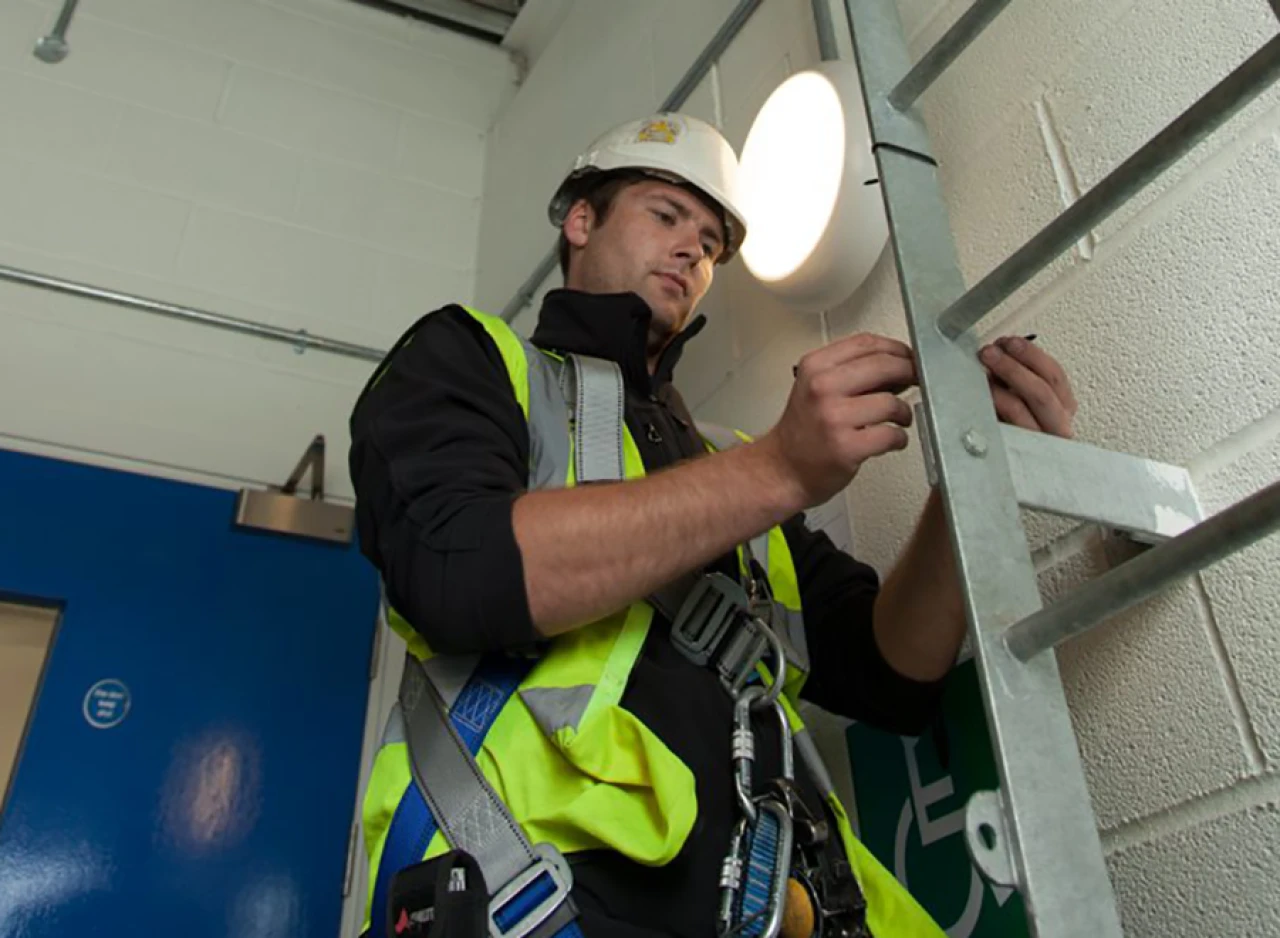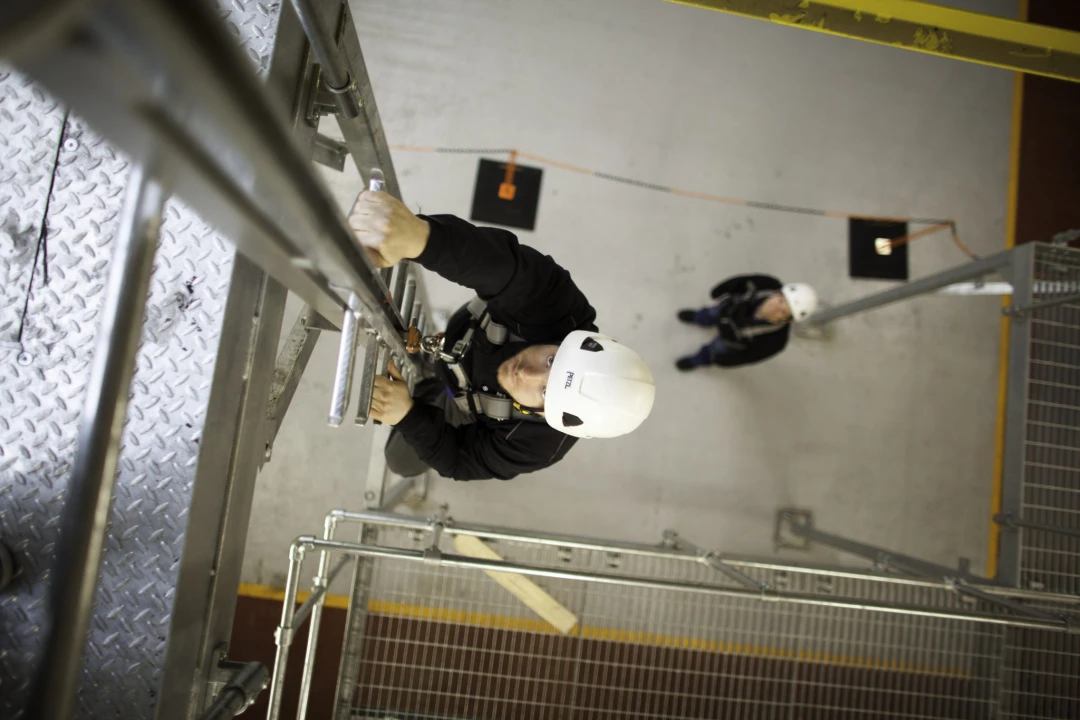

- Knowledge Base
- Tips & Explanations
- Why fixed ladder inspections are essential
Why fixed ladder inspections are essential
Fixed ladders are frequently used in the workplace and are subject to the Provision and Use of Work Equipment Regulations (P.U.W.E.R.) 1998.
The Health and Safety Executive (HSE) reported that falls from height accounted for 8% of all non-fatal workplace injuries last year. Ladder accidents account for a large number of falls from height in the workplace. In the food and beverage industry alone, 40% of falls from height were from a ladder.
Regular ladder inspections can help reduce ladder-related injuries.
Fixed ladders, typically constructed from steel or aluminium, are essential for providing access to work areas both indoors and outdoors, including rooftops, plants, silos, and more. Ensuring the safety of individuals who utilise these ladders is of utmost importance, regardless of their location.
In order to maintain a safe working environment, regular inspections of fixed ladders are necessary. These inspections are crucial for identifying any potential hazards or defects that could compromise the safety of those using the ladders.
Here, we will cover everything you need to know about fixed ladder inspections.

The requirements
It is required that the duty holder ensures any work equipment provided is:
Suitable for use, and for the purpose and conditions in which it is to be used
Maintained in a safe condition for use to ensure people’s health and safety are not at risk
Inspected regularly to make sure that it is and continues to be, safe for use by a competent person
Safe and staff are suitably trained on how to use and undertake pre-use inspections
Safety regulations
When conducting inspections of the site's ladders, it is crucial to document findings in accordance with current best practices.
To ensure compliance, it is recommended to refer to the following British Standards:
BS 4211:2005+A1:2008 - Specification for permanently fixed ladders
BS 5395–3:1985 - Code of Practice for the design of industrial-type stairs, permanent ladders, and walkways
BS EN 14122 - Safety of machinery. Permanent means of access to machinery. Working platforms and walkways
How we conduct fixed ladder inspections
As part of our meticulous process, our skilled engineers conduct thorough inspections on ladders to guarantee compliance with current legislation and to identify any potential hazards, including slips, trips, falls, and impact damage.
Furthermore, they meticulously check the security of all fixings and the functionality of all moving parts, such as self-closing gates located at the ladder's summit.
Following the inspection, each ladder is assigned a unique reference number, tagged with the next inspection due date, and a detailed report is generated for the customer, outlining our findings.
This comprehensive approach ensures our customers have complete peace of mind, knowing that their ladders are fully compliant and that safety measures are optimised to the highest standards.
Learn more about...


















